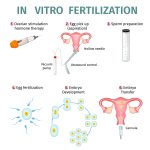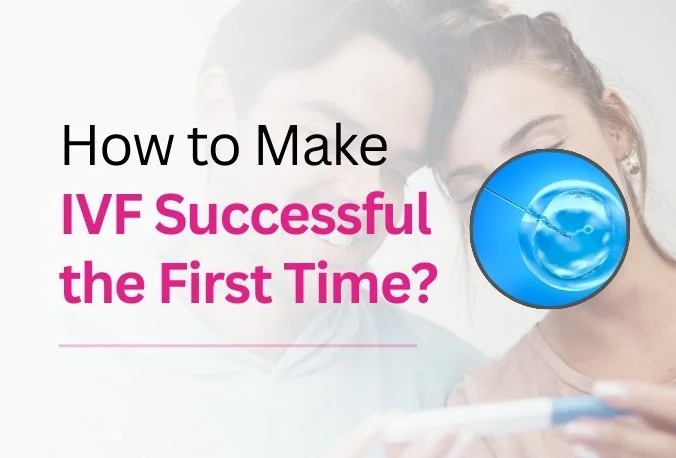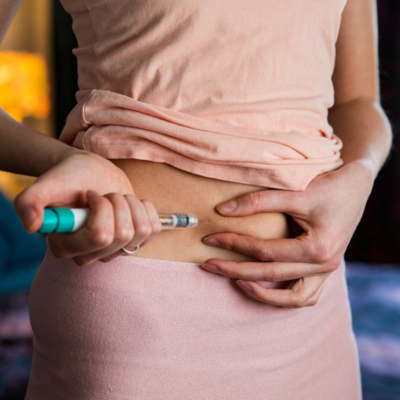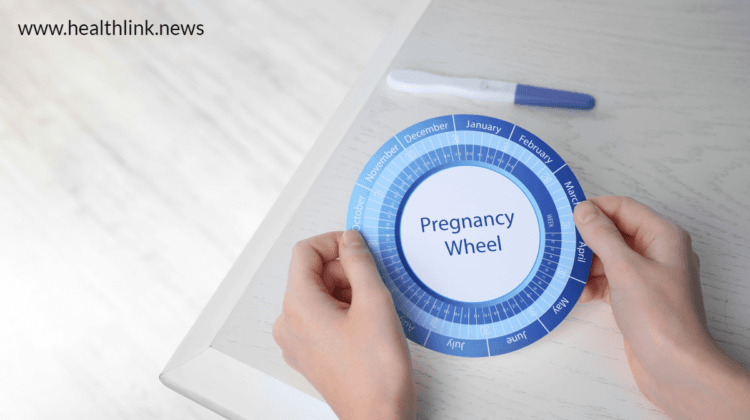Is IVF Tax Deductible? Your Guide to Saving Money on Fertility Treatments
April 24, 2025
What Does IVF Do? Your Guide to Understanding In Vitro Fertilization
April 24, 2025How to Make IVF Successful the First Time
Starting a family can feel like a dream come true, but for some, the journey isn’t as simple as they’d hoped. If you’re considering in vitro fertilization (IVF), you’re probably wondering how to boost your chances of success—especially on that very first try. IVF is a big step, emotionally and financially, so it’s natural to want it to work right away. The good news? There are ways to stack the deck in your favor. This guide dives deep into what makes IVF click, offering practical tips, science-backed advice, and a few fresh ideas you might not have seen before. Let’s walk through this together and get you ready for the best shot at growing your family.
Understanding IVF: The Basics You Need to Know
IVF is like a science-powered assist for starting a pregnancy. It’s where doctors take eggs from your ovaries, mix them with sperm in a lab, and then place the resulting embryo back into your uterus. Simple in theory, but there’s a lot going on behind the scenes. The process usually takes a few weeks, and every step matters—from prepping your body to picking the healthiest embryo.
Success isn’t guaranteed, though. For women under 35, about 40-50% of first-time IVF cycles lead to a baby, according to the Society for Assisted Reproductive Technology (SART). That number drops as age climbs, but don’t let stats scare you. They’re just a starting point. What really counts is how you approach the process. Age, health, and even tiny lifestyle tweaks can tip the scales. Ready to dig into what can make your first cycle a win? Let’s go.
Prepping Your Body: The Foundation of IVF Success
Think of your body as the home where your future baby will grow. Before IVF, you want that home in tip-top shape. Doctors will check your overall health, but there’s plenty you can do on your own to set the stage.
Your diet is a big player here. Eating a mix of colorful fruits, veggies, lean proteins, and whole grains gives your body the nutrients it needs. Studies from Harvard Medical School show that women who eat more plant-based proteins (like beans or nuts) and fewer processed meats have better fertility odds. Omega-3s, found in fish like salmon, also support egg quality. Aim for balance—don’t stress over every bite, but lean toward foods that fuel you.
Exercise matters too, but it’s a Goldilocks situation: not too much, not too little. About 30 minutes of moderate activity—like walking or yoga—most days can improve blood flow to your reproductive organs. A 2023 study in Fertility and Sterility found that women who stayed active (but didn’t overdo it) had higher implantation rates. Overtraining, though, can mess with your hormones, so skip the marathon prep for now.
Sleep is your secret weapon. Aim for 7-9 hours a night. Research from the National Institutes of Health (NIH) links poor sleep to lower egg quality and hormonal imbalances. Create a wind-down routine—maybe a warm bath or a good book—to help your body recharge.
✔️ Do: Eat a nutrient-rich diet, move your body gently, and prioritize sleep.
❌ Don’t: Crash diet, push yourself too hard with exercise, or skimp on rest.
Timing It Right: Why Your Cycle Matters
IVF isn’t a “whenever you feel like it” deal. Timing is everything. Your doctor will sync the process with your menstrual cycle, using meds to control when your ovaries release eggs. This controlled ovarian stimulation (COS) boosts the number of eggs you produce, upping your chances of getting a good embryo.
But here’s a twist: some clinics now offer “natural cycle IVF,” where they skip the heavy meds and work with your body’s single egg. It’s less invasive and cheaper, but success rates are lower—around 7-10% per cycle, per the Human Fertilisation and Embryo Authority (HFEA). Most folks stick with the medicated route for the first try because it gives you more shots at success.
Your doctor might also tweak timing based on your hormone levels. A blood test for anti-Müllerian hormone (AMH) can clue them in on your ovarian reserve—basically, how many eggs you’ve got left. If your AMH is low, they might adjust the plan to maximize what you’ve got. Trust their lead, but don’t hesitate to ask why they’re choosing a certain approach. It’s your journey, after all.
Picking the Right Clinic: Your Team Makes a Difference
Not all IVF clinics are created equal. A great team can be the difference between a baby and a do-over. Look for a clinic with solid success rates for your age group—check the CDC’s annual IVF report or SART’s database online. For example, in 2021, top clinics saw live birth rates near 50% for women under 35. That’s a benchmark to aim for.
Experience counts too. A clinic that’s been around the block knows how to handle tricky cases—like if you’ve got endometriosis or a low sperm count. Ask about their lab tech—do they use fancy tools like time-lapse imaging to watch embryos grow? A 2024 BBC report questioned if these extras really boost success, but some swear by them for picking the strongest embryo.
Visit the clinic if you can. Do the staff seem warm and on top of things? You’ll be spending a lot of time with them, so vibes matter. One couple I heard about switched clinics after feeling like just a number—and their next try worked. Your gut can guide you here.
✔️ Do: Research success rates, ask about tech, and meet the team.
❌ Don’t: Pick based on price alone or ignore red flags like poor communication.
Boosting Egg and Sperm Quality: The Building Blocks
IVF needs two key ingredients: healthy eggs and strong sperm. Let’s break it down.
For eggs, age is the biggest factor—yours drop in quality and quantity after 35. But lifestyle can help. Antioxidants like vitamin E (in nuts) and CoQ10 (a supplement) might protect eggs from damage. A 2022 study in Reproductive Biology and Endocrinology found women taking CoQ10 had better embryo quality. Talk to your doctor before popping pills, though—doses vary.
Sperm’s no different. Guys can up their game by cutting alcohol and quitting smoking. A 2023 NIH study showed men who smoked had 15% lower sperm motility (how well they swim). Heat’s a sneaky culprit too—hot tubs or tight pants can zap sperm count. Keep things cool down there.
Here’s a quick checklist for both of you:
- Eat antioxidant-rich foods (berries, spinach, walnuts).
- Skip the vices (booze, cigs, late nights).
- Consider a fertility-friendly supplement (after a doc’s OK).
The Embryo Transfer: Getting It Just Right
Once your eggs and sperm team up in the lab, you’ve got embryos. The transfer—putting one back in your uterus—is a make-or-break moment. Most clinics wait 3-5 days for the embryo to hit the blastocyst stage, when it’s got a better shot at sticking. A 2021 SART report showed blastocyst transfers had a 5-10% higher success rate than day-3 transfers.
Your doctor might suggest transferring just one embryo to avoid twins, which can be riskier. But if you’re over 38 or have had failed cycles, they might go for two. It’s a balance—more embryos can mean higher odds, but also more complications.
Here’s a pro tip: ask about “assisted hatching.” It’s when they make a tiny nick in the embryo’s shell to help it implant. Some studies say it boosts success for older women, but it’s not a slam dunk for everyone. Discuss it with your team.
Mini Quiz: What’s Your Transfer Style?
- A) “I trust my doc—whatever they say goes!”
- B) “I want one embryo, no twins for me.”
- C) “Give me all the embryos, max my chances!”
No right answer—just fun to think about!
Managing Stress: Keeping Your Mind in the Game
IVF can feel like an emotional rollercoaster. Stress doesn’t directly kill your chances, but it can make the ride tougher. A 2023 study from the American Society for Reproductive Medicine (ASRM) found women with lower stress levels during IVF had slightly higher pregnancy rates—think 5-7% more.
Try this: carve out 10 minutes a day for something calm. Meditation apps like Calm or Headspace can guide you. Or just sit with a cup of tea and breathe. One woman I know swore by journaling—scribbling down her worries helped her let them go.
Support’s huge too. Lean on your partner, a friend, or even an IVF support group online. Sharing the load lightens it. If it gets heavy, a therapist who gets fertility struggles can be a game-changer.
✔️ Do: Find a chill ritual, talk it out with someone you trust.
❌ Don’t: Bottle it up or beat yourself up for feeling stressed.
The Role of Meds: Fine-Tuning Your Protocol
IVF meds—like gonadotropins to grow eggs or progesterone to prep your uterus—are the backbone of the process. Your doctor tailors them to you, based on stuff like your AMH or past cycles. A typical protocol might mean 10-12 days of shots, then a trigger shot to release the eggs.
But here’s something new: some clinics are testing “mini-IVF” with lower doses. It’s gentler on your body and wallet, though success dips a bit—around 20-30% per cycle, per a 2024 Journal of Assisted Reproduction study. It’s worth a chat if you’re sensitive to meds or want a softer start.
Stick to the schedule like glue. Missing a dose can throw off the whole plan. Set phone alarms or ask your partner to nudge you. One slip-up won’t ruin everything, but consistency is your friend.
After the Transfer: The Two-Week Wait Survival Guide
The two-week wait (TWW)—that stretch between transfer and pregnancy test—is brutal. You’re dying to know if it worked, but there’s no rushing it. Your embryo’s busy trying to implant, and your job is to help it settle in.
Rest, but don’t hibernate. Light walks are fine; bed rest isn’t needed unless your doctor says so. A 2022 ASRM review found no proof strict rest boosts success. Eat warm, comforting foods—think soups or oatmeal—to keep your body cozy. Skip the home pregnancy tests—they can lie early on and mess with your head.
TWW To-Do List:
- Watch a funny movie (laughter’s free therapy).
- Sip herbal tea (caffeine’s out for now).
- Call a friend who gets it.
- Doodle or color—keep your hands busy.
Fresh vs. Frozen: A Choice Worth Exploring
Most first-timers go for a fresh embryo transfer, but frozen’s gaining ground. Why? Your body gets a break after egg retrieval, and the uterus might be more ready later. A 2023 New England Journal of Medicine study found frozen transfers had a 3-5% higher live birth rate for some women, especially those with PCOS.
Frozen also lets you test embryos for genetic glitches (PGD) if that’s your thing. It’s pricier and takes longer, but the payoff could be worth it. One mom I read about did frozen after a fresh fail—and her second try stuck. Talk pros and cons with your doc.
Quick Poll: Fresh or Frozen?
- Fresh: “I want it fast!”
- Frozen: “I’ll wait for the best shot.”
What’s your vibe? Drop a mental vote!
Three Game-Changers You Haven’t Heard Enough About
1. Your Gut Health Connection
Your gut might be the unsung hero of IVF. A 2024 study from the University of California found women with diverse gut bacteria had better embryo implantation rates—up to 10% higher. Probiotics (like yogurt or supplements) and fiber-rich foods (think apples or oats) can nurture your microbiome. It’s not a magic bullet, but it’s a low-effort boost worth trying.
2. Acupuncture’s Quiet Power
Acupuncture’s popping up more in IVF circles. A 2023 meta-analysis in Complementary Therapies in Medicine showed it might bump success rates by 8-12%, especially if done around transfer day. It’s about blood flow and relaxation—nothing woo-woo. One patient said it was her “calm in the storm.” Curious? Find a fertility-trained pro.
3. Sperm DNA Fragmentation
For guys, sperm count’s only half the story. DNA fragmentation—when sperm’s genetic code is scrambled—can tank embryo quality. A 2024 Andrology study linked high fragmentation to 15% lower IVF success. Tests aren’t standard yet, but if you’ve had fails, ask about it. Antioxidants like vitamin C might help fix it.
Real Talk: What If It Doesn’t Work?
Even with all this, IVF isn’t a sure thing. If that first try doesn’t pan out, it’s not game over. About 60% of couples get there by the third cycle, per SART. Each round teaches your doctor more—maybe they tweak meds or timing next time.
Take a breather if you need it. One couple I heard about took a month off, regrouped, and nailed it on try two. Failure stings, but it’s not the end. You’ve got options: more IVF, donor eggs, or even adoption. Whatever you choose, you’re still in the driver’s seat.
Your IVF Action Plan: Step-by-Step
Here’s how to roll it all into one doable plan:
- Month 1: Prep
- Eat clean, sleep well, start light exercise.
- Pick a clinic, book a consult.
- Month 2: Gear Up
- Get your tests (AMH, sperm check).
- Talk gut health or acupuncture with your doc.
- Cycle Start: Go Time
- Follow meds to the letter.
- Stay calm—lean on your crew.
- Post-Transfer: Wait Smart
- Keep it low-key, eat cozy foods.
- Test when they say—not before!
Wrapping It Up: Your First Try, Your Best Shot
IVF’s a marathon, not a sprint, but you can make that first mile count. Feed your body right, team up with a stellar clinic, and give your eggs and sperm some love. Timing, tech, and even your gut can play a role—small tweaks add up. Stress less, trust your plan, and know you’re not alone in this.
You’ve got this. Every step you take is a step closer to that little heartbeat. What’s one thing you’ll try first? Maybe a salmon dinner or a chat with your doc about frozen transfers? Whatever it is, you’re already on your way.




